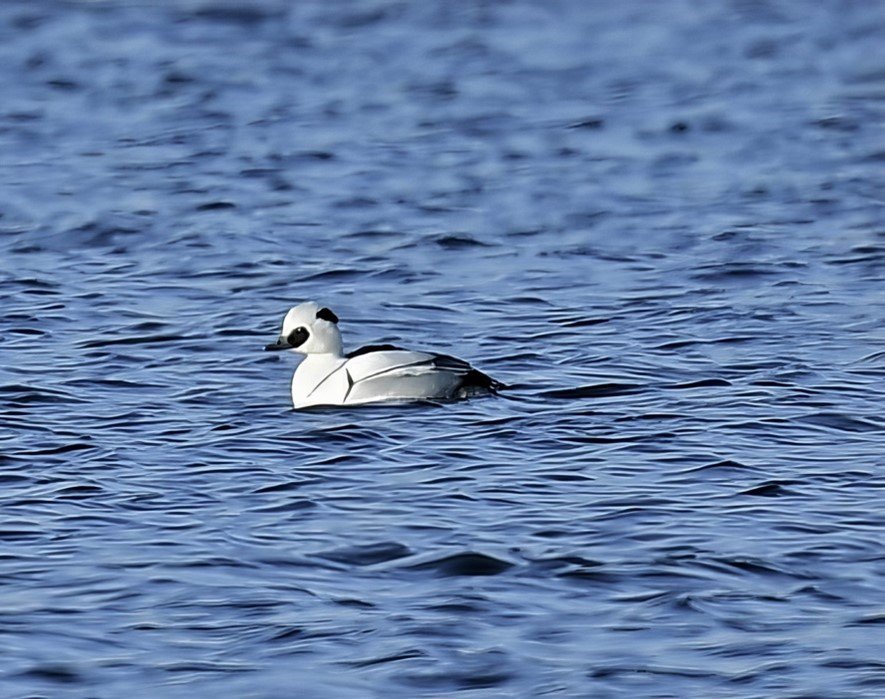Nosterfield Bird and Natural History Review January 2025
Lower Ure Conservation Trust
Nosterfield Bird and Natural History Review January 2025
Andrew (Andy) M Hanby
This month was a cold month with a minimum temperature of minus 13°C at Ravenseat. Overall, the temperature in North Yorkshire was 1.5-2c lower this month than the long term average. Included in all this was a significant snowfall on 5th/6th January. Compared with Beckwithshaw where I live, where it snowed on and off for 24 hours straight, less fell in the recording area - but enough for some to be around two weeks later. The other read-out affecting birds was freezing of the lakes, with the only open water left being on Langwith Lake and part of the Reserve.
From the very first day, this was the month of the owl. Barn Owls were seen almost every day, including a peak of 8 on 15th when six were in view at once from Langwith gate and two at the Middle Henge. Barn Owls fare badly in cold weather and particularly when there is a lot of snow cover. Though some of the birds seen are likely to have been local, others will have come from higher altitudes in the dales, where the snow persisted longer. Additionally, there were multiple sightings of Little Owl and Tawny Owl and best of all, a Short-Eared Owl on 15th and 19th.
Short-eared Owl Pam Boulton
Carry-over birds from December included the female Red-crested Pochard which was seen throughout nearly the whole month, until its last sighting on 27th. Two Whooper Swans, presumably the same as those seen on 13th December, also cropped up on five dates in the first half of the month. These were clearly different from the flock of seven which flew south on 3rd.
On 2nd, two Black-tailed Godwits appeared on the Reserve, our earliest by two days. Only one remained by 11th, the other likely lost to cold or predation.
The 4th was one of two good days for Pink-footed Goose movement - 232 moved north, whilst 247 also headed north on 15th.
As mentioned earlier, 5th was the day of the ‘Big Snow’ and a change in bird sightings, with Barn Owl already discussed above. Other species, such as Robins, became more noticeable as they came out onto the road edges to feed. Particularly striking was the appearance of multiple Stonechats across the recording area, with between eight and nine different individuals and a peak day count of seven. These were seen mostly in the Langwith and Reserve area, but also singles were reported near the Reedbed and by Well bend. Once the snow had cleared, they were gone.
Stonechat Gareth Jones
A male Merlin on 8th and a Woodcock on 11th were to be expected, but less so was a Chiffchaff on 10th. The latter was a brief sighting near Langwith possibly because the nearby Ings Goit is a good place for insectivores trying to survive the cold.
Two red-head Smew on Langwith Lake on 12th were very much in the ‘blink and you missed it’ category. The lucky observer doing a WeBS count picked them up. In the time it took him to photograph them and hail another nearby birder, they had vanished, never to be seen again.
The 13th saw the first sighting of two Ravens in the area, the second being on 29th. A subtle low-level uptick in Ravens might be occurring locally, which would be in line with general trends nationally.
Farmland birds were not particularly noticeable at the beginning of the month apart from some, such as Meadow Pipits in unexpected locations. In particular, a dearth of Skylarks was noticeable. However, with the thaw a build-up was noticeable in the stony fields around the Southern Henge. Thirty on 15th increased to 140 the next day and by the last day of the month 221 Skylarks were present, accompanied by good numbers of Redwing, Fieldfare, Linnet and a handful of Meadow pipits. More of the latter were in a flock of up to 46 birds located in fields by Langwith.
Meadow Pipit Amanda Hart
Little Egrets became scarce after the cold snap, but a Great White Egret remained and perhaps more surprisingly, Cetti’s Warbler was still heard on and off in the Flasks Lake area, competing with Water Rail for noise generation.
Water Rail Nathan Beer
As well as the duck exotica, other duck were present in good numbers, with up to 18 Pintail, 33 Pochard and 31 Goldeneye.
Pintail Tim Scott
Most unexpected for the date was an adult Yellow-legged Gull on Langwith Lake on 18th. This was a grand prelude to, on 19th, the second winter count and our participation in the BTO-organised national Winter Gull Survey, revealing 3268 Black-headed Gulls and 1501 Common Gulls. Interestingly, most of the former arrive from the north and from relatively early on, whilst the Common Gulls, of which few are seen during the day, mainly come in the last hour and from the south and west.
Scarce geese stepped on to the stage, with a Eurasian White-fronted Goose near Well bend on 20th followed by two smart Tundra Bean Geese on the Reserve with the Greylags on 24th.
White- fronted Goose Tim Jones
Tundra Bean Geese Nathan Beer
On 25th an impressive 540 Curlew were counted across the two roosts on the Reserve and Langwith. Both roosts disperse soon after dawn, so it takes some co-ordination to see all these birds. The same day an avian trump card was played, when a fabulous male Smew was found on Langwith Lake which then had the decency to perform to many into February.
A fly-over Crossbill on 28th and our first spring visitor, a Lesser Black-backed Gull on 31st rounded up an interesting month.
Male Smew Ian Webster








